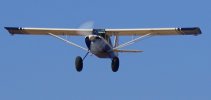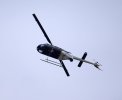For those who say, "If an airplane/helicopter is flying less than 400' AGL they have problems on their hands and should never be flying in "My Area" that low" you're WRONG!
Take a look at a picture snapped right here in western NC yesterday from someone's front deck (This is not a drone/aerial pic). This C-130 (and the other 3 shortly there after) were flying legally at about 200' AGL.

If you can't See & Avoid you shouldn't be flying at all . . .
Take a look at a picture snapped right here in western NC yesterday from someone's front deck (This is not a drone/aerial pic). This C-130 (and the other 3 shortly there after) were flying legally at about 200' AGL.

If you can't See & Avoid you shouldn't be flying at all . . .














